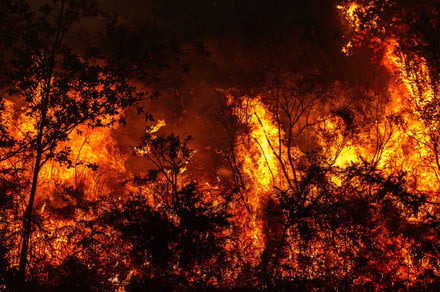When it come to dealing with the growing problem of raging wildfires, a number of high-tech solutions have been put forward, including using water-carrying, self-flying helicopters to help extinguish blazes. A new wireless smart sensor system could take a more proactive approach, however, by spotting wildfires before they get out of control to start with. A prototype version of the low-cost wildfire-detection tech was developed recently as part of three-month startup incubator Hacking House. Its creators, called Team Lali, are now hoping to expand it into a full-fledged system.
“The idea is to deploy temperature sensors as close as you can to detect the presence of fire,” Sucre “Kevin” Cando, one of the three engineers behind the project, told Digital Trends. “It means that, in principle, if you have 1,000 trees in a [1-square-kilometer] area and you deploy 1,000 sensors, then you can know how temperature is changing within each tree. This can allow you to early detect fire since you know for each tree if there’s fire or not.”
The idea for the project was originally based on finding applications for the low-power, wide-area network technology created by SigFox, the company behind Hacking House. The three engineers behind the project (the other two are Nassim Bettach and Jay Nagdeo) proposed fighting wildfires as their chosen use case. Their demo involved using affordable temperature sensors, alongside IBM’s Watson technology to interpret the values and avoid false alarms by comparing multiple sensor readings.
“This solution will reduce the response time for firefighters, as it is very crucial to intervene … as soon as possible,” Cando said. “It will also help the firefighters in knowing the exact location of fire and thus help them in planning the deployment of their resources.”
The team is now developing its concept. They believe that the network could cost around $10 per sensor, including installation, along with base stations for every 150,000 acres. Considering that a fire can cause $7,000 of damage per acre, this solution could turn out to be a worthwhile investment.
“We are working on refining the product design for … large-scale testing,” Cando said.
We’ll keep our fingers crossed for further (potentially lifesaving) developments.
Editors’ Recommendations
- Virginia Tech beats out competition, wins smart home Solar Decathlon
- Virginia Tech beats out competition, wins smart home Solar Decathlon
- Virginia Tech beats out competition, wins smart home Solar Decathlon
- This tiny house produced in the Alps opens up to the skies
- Students who designed transforming smart home will compete in Solar Decathalon

